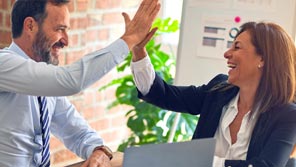A few years ago, most online shops were built on a simple idea: attract traffic, convert as many visitors as possible into buyers, and repeat. Revenue grew in waves, driven by campaigns, seasonality, and platform performance. That model worked reasonably well as long as advertising was cheap and competition was moderate.
Today, the conditions have changed. Customer acquisition costs have risen across almost every channel, and competition in most verticals is intense. At the same time, shoppers are more conscious about where they spend and increasingly expect brands to deliver ongoing value rather than just single purchases. In this environment, it’s no surprise that subscription commerce has become one of the dominant narratives in e-commerce.
But the reality on the ground is more complex. Some brands unlock impressive growth with subscription billing; others launch a subscription offer, struggle with churn, payment failures, and operational overhead, and quietly shift back to one-time sales. Meanwhile, one-time payment models are still working very well in many segments, especially for high-ticket products and category leaders.
That’s why the question “subscription billing vs. one-time payments — what drives more revenue?” is not just a theoretical comparison. It’s a strategic decision that shapes your revenue curve, your cost structure, and how resilient your business becomes over the next few years.
What truly differentiates these models
On the surface, both models are simply ways to charge for products. Underneath, they are built on very different economic logics.
Subscription billing: from transactions to relationships
Subscription billing turns a single purchase decision into an ongoing relationship. The headline benefits are familiar: recurring revenue, predictable cash flow, and higher customer lifetime value (LTV). Even modest monthly amounts compound into significant annual revenue. A €20 subscription doesn’t look dramatic on day one, but over 12 or 24 months, it easily outperforms a one-time €40 order.
The real power of subscriptions is that they decouple revenue from short-term campaign performance. Instead of fighting every month for the next sale, a growing subscriber base generates Monthly Recurring Revenue that stabilises the business and allows more confident planning. Inventory management improves because you can forecast demand more accurately. Marketing spend becomes more efficient because the payback period is spread across many billing cycles rather than a single order.
However, subscriptions introduce a specific vulnerability: they are exposed not only to customer decisions (“I want to cancel”) but also to technical and financial friction inside the payment process. A surprising share of churn is involuntary — caused by expired cards, insufficient funds, failed SEPA mandates, or overly strict bank risk checks. If recurring billing is not handled well, 20–30% of subscription revenue can be lost without a single explicit cancellation. Subscription businesses therefore live and die not just by the value they deliver, but by the quality of their billing and recovery mechanisms.
One-time payments: maximising the moment
One-time payments are built around a different type of optimisation. Here, the focus is on conversion and average order value (AOV). The merchant’s objective is to make the one purchase as attractive and frictionless as possible. The simplicity of this model is its strength: the customer commits once, pays once, and the relationship technically ends once the product is delivered.
This makes one-time models very effective for categories where buying cycles are long or purchases are emotionally and financially heavy: electronics, furniture, higher-end fashion, home equipment, and so on. In many of these cases, trying to force a subscription would not only feel artificial to the customer, it would also add complexity with little upside.
But the trade-off is clear. Without any form of recurring mechanic, revenue becomes highly dependent on the constant acquisition of new customers or the reactivation of old ones through paid campaigns, email flows, and promotions. The LTV of a purely one-time model often remains relatively low, and the business becomes vulnerable to fluctuations in ad costs and platform policies.
LTV vs. AOV: the core tension
This is the essence of the comparison:
-
Subscription models typically win on LTV and predictability.
-
One-time models typically win on AOV and simplicity.
Where many brands go wrong is in assuming there is a universal winner. In reality, the better model is the one that matches your product’s natural consumption pattern and your ability to support it operationally — especially on the payments side.
How to choose and implement the model that drives more revenue
The interesting part is not the theory, but the practical decision: which model should you lean into, and how do you execute it in a way that actually increases revenue instead of adding complexity?
Start with the product and its natural rhythm
The first filter is brutally simple: how do customers realistically use your product?
If your offering is naturally recurrent — coffee, supplements, pet food, cosmetics, consumables, memberships, software — a subscription model will usually unlock more revenue over time. In those cases, the customer already behaves in a “subscription-like” way; you are simply formalising that behaviour into a structured, predictable billing model.
If your product is something people buy infrequently — a €900 espresso machine, a winter jacket, a high-end lamp — pushing a subscription can feel forced. Here, one-time payments remain the healthier core model, and your energy is better spent optimising conversion and margin rather than inventing a billing structure that doesn’t match actual usage.
Look at your CAC–LTV economics honestly
The second question is financial: how much does it cost you to acquire a new customer, and how much value do you generate over the lifetime of that relationship?
In a one-time model, the entire Customer Acquisition Cost (CAC) must recover within one or perhaps two purchases. This is perfectly viable in high-margin categories but becomes painful in competitive, low-margin environments, especially if your AOV is modest and ads are expensive.
Subscriptions change that equation by stretching the payback period. If your retention is solid and your billing is reliable, you can afford higher CAC because LTV is significantly higher. That is why many D2C brands that successfully move into subscriptions can keep investing aggressively in paid acquisition while others have to cut back.
Be honest about your operational and payment maturity
Subscription billing is not just “turning on recurring payments.” It comes with ongoing responsibilities: handling upgrades and downgrades, pauses and skips, transparent cancellation, regulatory requirements around consent and trials, and most importantly, the mechanics of recurring payments themselves.
To make subscriptions truly accretive to revenue, you need infrastructure that can:
-
manage recurring charges across different payment methods,
-
handle smart retries and failed payments intelligently,
-
keep card details and mandates up to date,
-
distinguish between voluntary and involuntary churn,
-
communicate clearly with customers about billing events.
If you don’t have this in place — or don’t work with a provider who does — subscription revenue will look good on paper but erode quietly in reality.
For one-time payments, the bar is different. The priority is a smooth checkout, support for the right payment methods in your target markets, and low friction. There is no recurring complexity, but you trade that for a heavier reliance on acquisition and remarketing.
Use hybrid models to avoid false binaries
In many cases, the most powerful approach is not choosing one model over the other, but combining them intelligently.
Hybrid strategies might include:
-
offering both “buy once” and “subscribe & save” on the same product page,
-
allowing customers to start with a one-time purchase and convert to a subscription later,
-
using subscriptions for replenishable items and one-time purchases for higher-ticket accessories,
-
building memberships or clubs that sit on top of one-time purchases and create recurring value via perks, access, or better pricing.
Done well, this hybrid setup lets you capture the high AOV of one-time buyers and the long-term value of subscribers, without forcing customers into a structure that doesn’t fit their preferences. The most successful brands often see their revenue curve smooth out as the subscription side grows, while still benefiting from strong one-time peaks.
Treat payments as a strategic lever, not an operational detail
Finally, whichever model you prioritise, the payment layer is not just plumbing; it’s one of the strongest levers you have over actual realised revenue.
For subscriptions, incremental improvements in successful recurring charges — through better retries, mandate handling, and payment method mix — go straight to the bottom line in the form of recovered revenue and lower involuntary churn. For one-time payments, optimising checkout flow and the availability of preferred methods can materially lift conversion and AOV.
This is where working with a capable payment partner becomes a competitive differentiator: one that not only processes transactions, but actively supports recurring billing, failure recovery, and compliance, rather than leaving merchants to solve these challenges alone.
Choose the model that fits your reality, then execute it properly
So which model drives more revenue — subscription billing or one-time payments?
In most recurring-use categories, a well-executed subscription model will outperform pure one-time sales over the long term, because it captures ongoing demand, smooths cash flow, and increases customer lifetime value. But this is only true when the product justifies ongoing commitment and when payment operations are mature enough to keep churn and billing failures under control.
One-time payments remain the strongest choice for infrequent, high-value purchases and for brands that prioritise simplicity and speed. Their downside is not that they “don’t work,” but that they require a constant flow of new customers and a resilient marketing engine to maintain growth.
The most sophisticated e-commerce businesses increasingly move beyond the binary question. They design revenue models that reflect how their customers actually buy, and they invest in the payment foundations that keep both one-time and recurring revenue reliable.
In other words, revenue doesn’t follow the trend. It follows the alignment between your product, your customers’ habits, and the quality of the payment infrastructure that quietly powers every transaction behind the scenes.
Ready to Choose the Right Revenue Model? Speak With Our Experts
Whether you’re considering a shift toward subscription billing, refining your one-time sales strategy, or exploring a hybrid approach, the right payment infrastructure will determine how much revenue you actually realise. If you want support in analysing your current billing setup, reducing churn, or building a more resilient revenue model, our team is here to help.
Alexander Burba is a Performance Marketing Specialist at Novalnet AG in Munich, where he leads digital acquisition and brand initiatives. With over 7 years of experience in B2B SaaS, FinTech, and IT marketing, Alexander has supported international teams in Germany and Ukraine, serving clients across the EU, US, and global markets. He combines data-driven strategy with cross-functional collaboration to deliver measurable growth for Novalnet and its partners.












